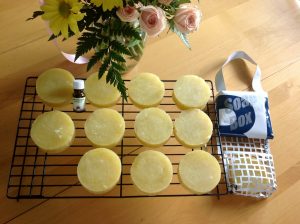The Toxins in Your Shampoo… Are They Real?
Many blogs and companies are advertising all-natural hair products, claiming that chemicals are bad for the environment and can damage the scalp. Well, some effects of those chemicals might have been overblown.
Why all the fuss over shampoo? Does it not clean like soap does?
Shampoo does clean like soap. Soap is formed by reacting a fat or oil with sodium hydroxide (NaOH) or potassium hydroxide (KOH), this is called saponification. You might have noticed that soap bars don’t lather up as much as body wash or shampoo, this is due to the absence of sodium lauryl sulfate (SLS). Shampoos also have added ingredients that give you the advertised hair quality.
Sodium Lauryl Sulfate (SLS): Lather Up!
SLS can reduce the surface tension between a liquid and another liquid, solid, or gas. When surface tension is decreased, its spreading and wetting properties increase, thereby creating that lather effect. But nothing is completely beneficial, SLS can strip off the natural oils in your hair stronger than soap. It also makes your eyes sting upon contact, but hey, your eyes sting when anything aside from eye drops enters it too.
Is SLS Safe? Research disagrees with most blogs
As mentioned above, SLS is an irritant and thus is often accused of damaging the scalp and increasing hair loss. There have also been some tertiary resources that say that SLS can cause blindness! Although there are researches that point to toxicity in SLS, they examined the continuous use of large amounts of SLS. SLS only causes mild skin inflammation after 24 hours of continuous exposure and eye damage after direct exposure for two weeks (Bondi et al. 2015). Also, SLS works like soap, so it gets washed away with water. If you give your hair a thorough rinse every time you wash it, then you don’t need to worry about long-term exposures and buildups!
Is SLS Eco-Friendly?
One thing great about all-natural products is that they are biodegradable, unlike plastic and styrofoam. But SLS can be decomposed into minerals that can be reused completely (Bondi et al. 2015). However, high amounts of SLS that gets washed away with water potentially poisons aquatic life. Therefore, governments have restricted the amount of SLS in commercial products to remain at a safe level. That being said, SLS is still biodegradable, therefore, small amounts of SLS can decompose even before it reaches the sewer (Bondi et al. 2015).
If you are still worried…
If SLS still worries you, definitely opt for an all-natural shampoo, however, it might be useful to consider what the resulting product is after those natural ingredients have reacted.
Note: this article assumes that there are no major errors in the research review on the toxicity of SLS done by Bondi et al. (2015).
References:
Bondi C., Marks J.L., Wroblewski L.B., Raatikainen H.S., Lenox S.R. and Gebhardt K.E. (2015). Human and Environmental toxicity of sodium lauryl sulfate (SLS): Evidence for safe Use in Household Cleaning Products. Environmental Health Insights 2015:9 27–32 doi: 10.4137/EHi.s31765.


